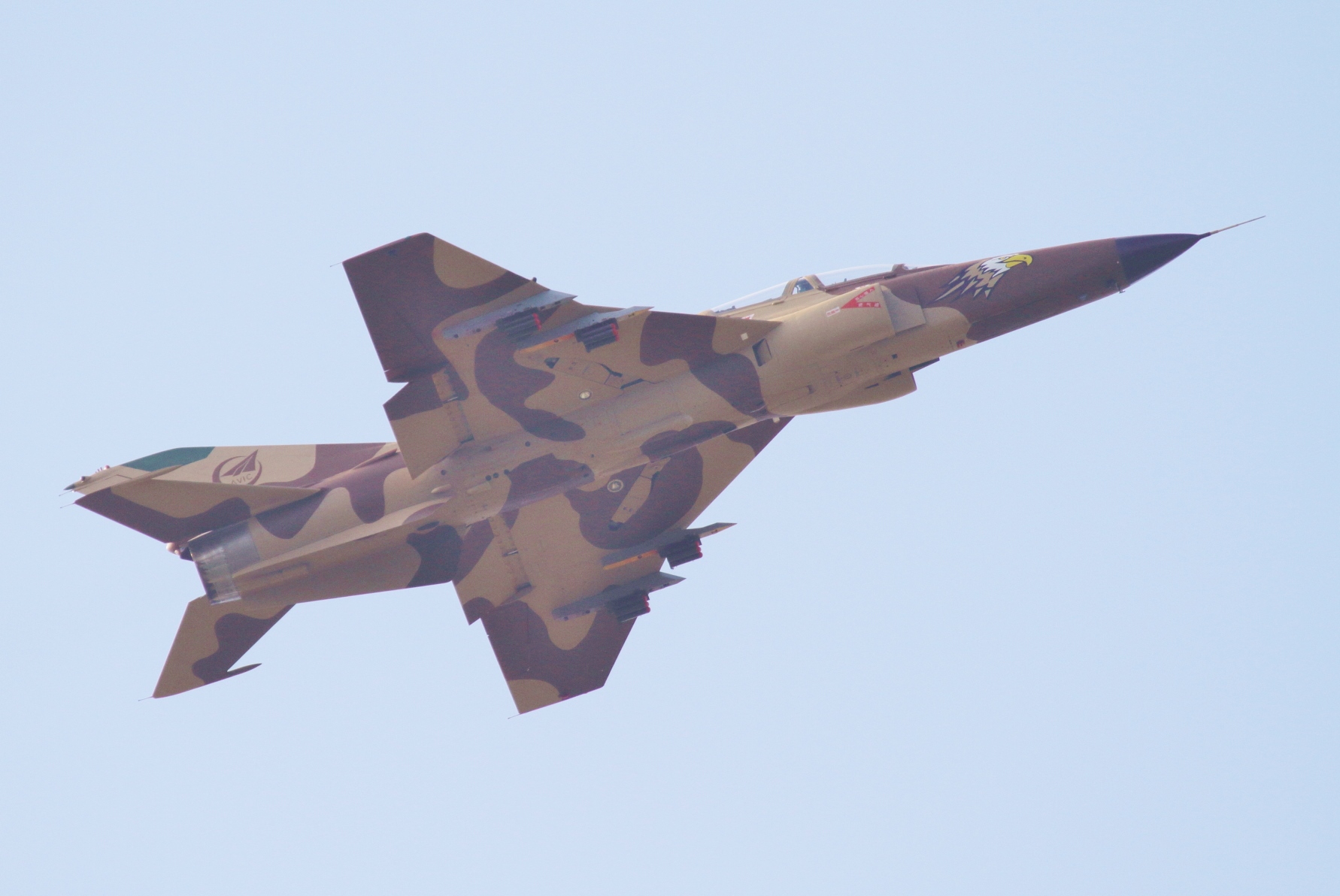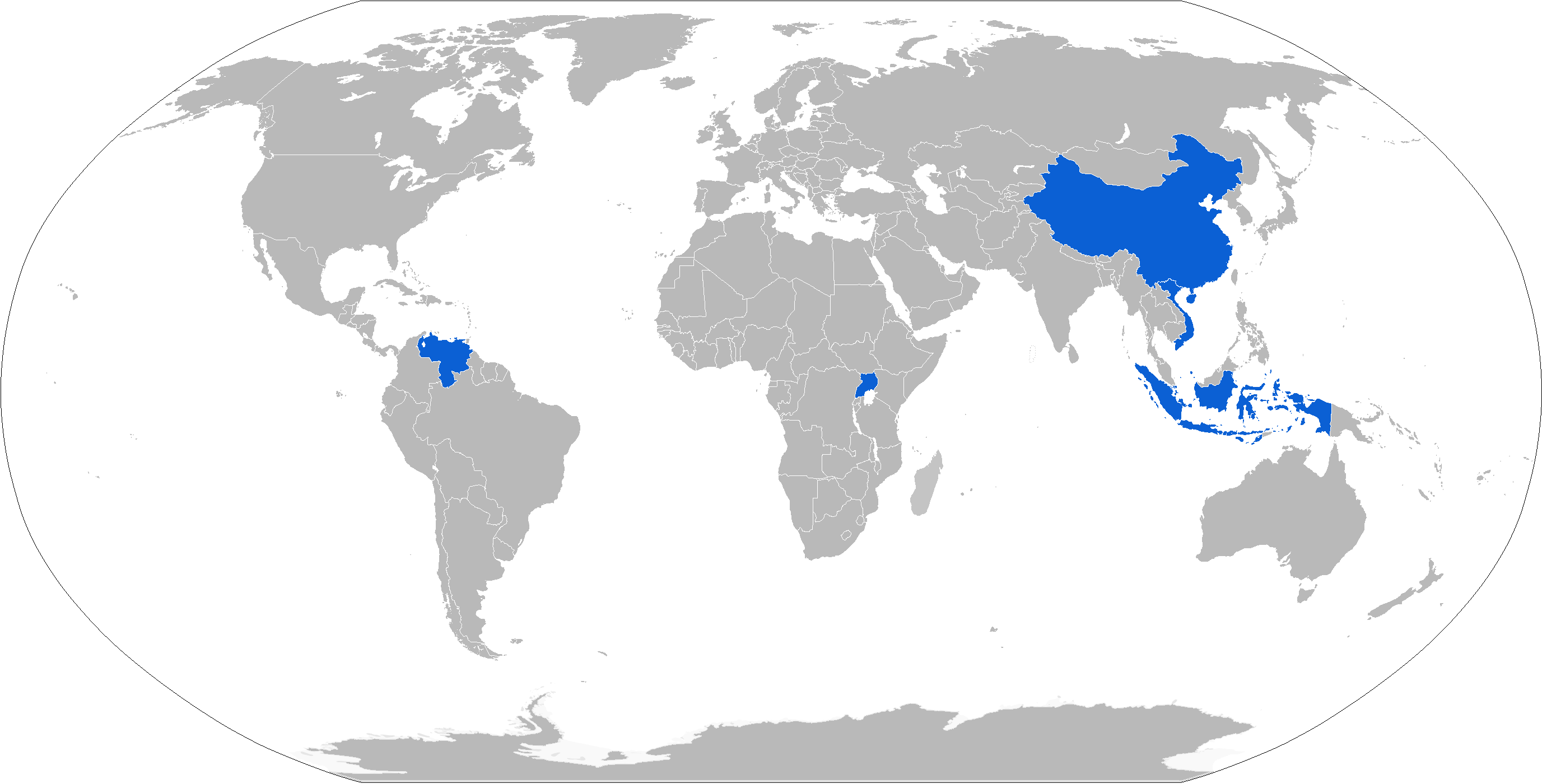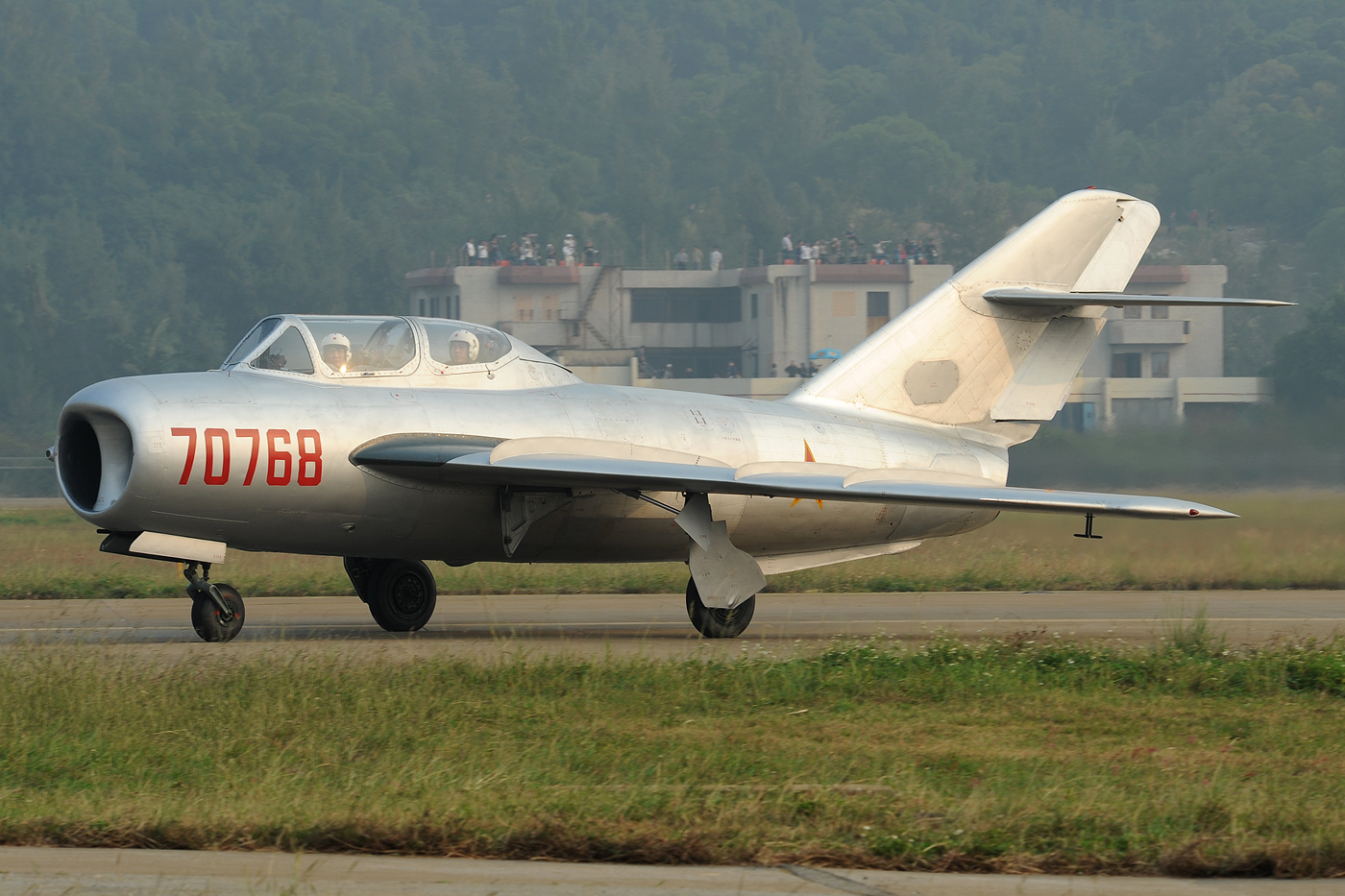|
PLANAF
The People's Liberation Army Naval Air Force (PLANAF; ) is the naval aviation branch of the People's Liberation Army Navy. Overview Historically, the PLANAF's main role has been to provide the navy's warships with air defense coverage. Part of the coastal defense doctrine was to have naval aircraft protecting the ships, hence the reason why many PLA ships of the 1960s–70s lacked long range anti-aircraft missiles or artillery. During the Sino-Vietnamese War, the PLANAF carried out many successful bombing and airstrike missions against Vietnamese territories, such as in the Spratly Islands. The 1960s saw a series of air combat sorties flown against the Republic of China Air Force. PLANAF pilots have been credited with many major victories over the Taiwanese in these small incidents. Historical aircraft operated by the PLANAF include the J-5, the J-6, and H-5. These aircraft have been retired by the late 1990s. Today, the PLANAF has a strength of around 26,000 personnel and ... [...More Info...] [...Related Items...] OR: [Wikipedia] [Google] [Baidu] |
Xian JH-7
The Xi'an JH-7 ( – fighter-bomber; NATO reporting name Flounder), also known as the FBC-1 (Fighter/Bomber China-1) Flying Leopard, is a tandem two-seat, twin-engine fighter-bomber in service with the People's Liberation Army Naval Air Force (PLANAF), and the People's Liberation Army Air Force (PLAAF). The main contractors are Xi'an Aircraft Industrial Corporation (XAC) and the 603rd Aircraft Design Institute (later named the First Aircraft Institute of AVIC-I). The first JH-7s were delivered to the PLANAF in the mid-1990s for evaluation, with the improved JH-7A entering service in 2004. Development history A new fighter bomber In the early 1970s, the PLAAF required a new fighter-bomber to replace the Harbin H-5 and Nanchang Q-5. A request was duly submitted to the Ministry of Aviation Industry (later renamed to the Aviation Industry Corporation of China), which organized a domestic development program when efforts to secure a joint venture with foreign partners failed. T ... [...More Info...] [...Related Items...] OR: [Wikipedia] [Google] [Baidu] |
Xian H-6
The Xian H-6 () is a twin-engine jet bomber of the Chinese People's Liberation Army Air Force (PLAAF). The H-6 is a license-built version of the Soviet Tupolev Tu-16 and remains the primary bomber aircraft of the People's Republic of China. Delivery of the Tu-16 to China began in 1958, and a license production agreement with the Soviets was signed in the late 1950s. By November 2020, the PLAAF had as many as 231. The latest variant of the H-6 is the H-6N, a heavily redesigned version capable of aerial refueling and carrying air-launched cruise missiles. According to the United States Department of Defense, this will give the PLAAF a long-range standoff offensive air capability with precision-guided munitions. History Having entered service with the Soviet Union in April 1952, the Tupolev Tu-16 was one the Soviets' earliest effective jet bombers with over 1,500 produced through 1962. Early in 1956, the Soviet Union agreed to license production of the Tu-16 to the People's Re ... [...More Info...] [...Related Items...] OR: [Wikipedia] [Google] [Baidu] |
Guizhou JL-9
The Guizhou JL-9, also known as the FTC-2000 Mountain Eagle (), is a family of two-seat supersonic advanced jet trainer and light combat aircraft developed by the Guizhou Aviation Industry Import/Export Company (GAIEC) for the People's Liberation Army Air Force (PLAAF) and the People's Liberation Army Naval Air Force (PLANAF). Development The FTC-2000 started as a GAIEC private venture to develop an inexpensive trainer for fourth generation aircraft. The trainer was revealed at the 2001 China International Aviation & Aerospace Exhibition. The aircraft are reported to be produced at a GAIC assembly line in Anshun, Guizhou. The FTC-2000, as the JL-9, competed with the Hongdu JL-10 to meet the advanced trainer requirements of the PLAAF and PLANAF. The JL-10 is more technologically advanced, but also more expensive, than the JL-9. In 2013, both had entered production. A carrier-landing trainer variant was revealed by Chinese state media in 2011. Designated the JL-9G, it has str ... [...More Info...] [...Related Items...] OR: [Wikipedia] [Google] [Baidu] |
Shenyang J-15
The Shenyang J-15 (Chinese: 歼-15), also known as ''Flying Shark'' (; NATO reporting name: Flanker-X2, is a Chinese all-weather, twinjet, carrier-based fourth-generation multirole fighter aircraft developed by the Shenyang Aircraft Corporation (SAC) and the 601 Institute, specifically for the People's Liberation Army Naval Air Force (PLANAF) to serve on People's Liberation Army Navy's aircraft carriers. An unfinished prototype Su-33, the T-10K-3, was acquired by SAC from Ukraine in 2001 and was said to have been studied extensively and reverse-engineered, with development on the J-15 beginning immediately afterward. While the J-15 appears to be structurally based on the prototype of Su-33, the fighter features indigenous Chinese technologies as well as avionics from the Shenyang J-11B program. In February 2018, discussions about replacing the aircraft appeared in several Chinese media outlets including Xinhua and China's main military newspaper, discussing that it belongs ... [...More Info...] [...Related Items...] OR: [Wikipedia] [Google] [Baidu] |
People's Liberation Army Navy
The People's Liberation Army Navy (PLAN; ), also known as the People's Navy, Chinese Navy, or PLA Navy, is the maritime service branch of the People's Liberation Army. The PLAN traces its lineage to naval units fighting during the Chinese Civil War and was established on 23 April 1949. Throughout the 1950s and early 1960s, the Soviet Union provided assistance to the PLAN in the form of naval advisers and export of equipment and technology. Until the late 1980s, the PLAN was largely a riverine and littoral force (brown-water navy). In the 1990s, following the fall of the Soviet Union and a shift towards a more forward-oriented foreign and security policy, the leaders of the Chinese military were freed from worrying overland border disputes. Traditionally subordinated to the PLA Ground Force, PLAN leaders were now able to advocate for a renewed attention towards the seas. Chinese military officials have outlined plans to operate in the first and second island chains, and ... [...More Info...] [...Related Items...] OR: [Wikipedia] [Google] [Baidu] |
Shaanxi Y-8
The Shaanxi Y-8 or Yunshuji-8 () aircraft is a medium size medium range transport aircraft produced by Shaanxi Aircraft Corporation in China, based on the Soviet Antonov An-12. It has become one of China's most popular military and civilian transport/cargo aircraft, with many variants produced and exported. Although the An-12 is no longer made in Ukraine, the Chinese Y-8 continues to be upgraded and produced. An estimated 169 Y-8 aircraft had been built by 2010. Design and development Imported An-12 In the 1960s, China purchased several An-12 aircraft from the Soviet Union, along with license to assemble the aircraft locally. However, due to the Sino-Soviet split, the Soviet Union withdrew its technical assistance. The Xi'an Aircraft Company and Xi'an Aircraft Design Institute worked to reverse engineer the An-12 for local production. Domestic Design of the aircraft was completed by February 1972. Major features of the Y-8 included a glazed nose and tail turret derived from th ... [...More Info...] [...Related Items...] OR: [Wikipedia] [Google] [Baidu] |
Changhe Z-18
The Changhe Z-18, also known as Z-8G, is a medium-lift transport helicopter developed by Changhe Aircraft Industries Corporation (CAIC) to replace the Changhe/Harbin Z-8. Design and development The Z-18 is a development of the Avicopter AC313 and Changhe/Harbin Z-8, both of which are developments of the Aérospatiale SA 321 Super Frelon. Notable changes include a redesigned lower fuselage similar to the AC313 which results in larger internal space. It also reportedly makes greater use of titanium and composites in its rotor blades and rotor, and replaces the Z-8's boat-shaped lower fuselage with a tail ramp for small vehicles. It has a glass cockpit and is powered by three WZ-6C turboshafts. The Z-18's maximum takeoff weight (MTOW) is 13.8 tonnes. In late-2014, the only People's Liberation Army Navy (PLAN) ships able to operate the helicopter at MTOW were aircraft carriers and large amphibious assault ships. Operational history The Z-18F anti-submarine warfare (ASW) version w ... [...More Info...] [...Related Items...] OR: [Wikipedia] [Google] [Baidu] |
Sukhoi Su-30MKK
The Sukhoi Su-30MKK (NATO reporting name: Flanker-G)MKK stands for Russian ''Mnogofunktzionniy Kommercheskiy Kitayski'' (Cyrillic: Многофунктзионний Коммерческий Китайски), "Multifunctional Commercial for China". is a modification of the Sukhoi Su-30, incorporating advanced technology from the Sukhoi Su-35 variant. The Su-30MKK was developed by Sukhoi in 1997, as a result of a direct Request for tender between the Russian Federation and China. It is a heavy class, all-weather, long-range strike fighter, and like the Sukhoi Su-30, comparable to the American McDonnell Douglas F-15E Strike Eagle. Su-30MK2 is a further improvement to Su-30MKK with upgraded avionics and maritime strike capabilities. The MKK and MK2 are currently operated by the People's Liberation Army Air Force, Indonesian Air Force, Vietnam People's Air Force, Venezuelan Air Force and the Ugandan Air Force. Development The People's Liberation Army Air Force (PLAAF) leadership ... [...More Info...] [...Related Items...] OR: [Wikipedia] [Google] [Baidu] |
Harbin SH-5
The Harbin SH-5 (, where "水轰" is short for ) is a Chinese maritime patrol amphibious aircraft intended for a wide range of duties, including aerial firefighting, anti-submarine warfare (ASW) and air-sea rescue (ASR). One prototype and six production aircraft have been built. Design and development Research to build a seaplane capable of replacing Beriev Be-6s in service was initiated by the PLANAF in 1968, with designers reassigned from "Objective 3/17", a supersonic canard-wing fighter project. The first prototype flew in 1976; further units were delivered between 1986 and 1990. Variants ;SH-5B Firefighter :One SH-5 was rebuilt for firefighting duties. :However, by Chinese source, there were total of 7 SH-5 were produced: 3 SH-5X Prototype, 3 Maritime patrol aircraft, and 1 SH-B Firefighter. Operators ; * People's Liberation Army Naval Air Force received 4 aircraft in 1986. All are operated by the People's Liberation Army Navy North Sea Fleet from an aircraft base near Q ... [...More Info...] [...Related Items...] OR: [Wikipedia] [Google] [Baidu] |
Shenyang J-11
The Shenyang J-11 (Chinese: 歼-11; NATO reporting name Flanker-B, -L) is a twin-engine jet fighter of the People's Republic of China whose airframe is derived from the Soviet-designed Sukhoi Su-27. It is manufactured by the Shenyang Aircraft Corporation (SAC). The aircraft is operated by the People's Liberation Army Air Force (PLAAF) and the People's Liberation Army Naval Air Force (PLANAF). Development Proposed J-11 In the 1970s, the PLAAF initiated a project to develop a replacement for its MiG-19s. The Shenyang Aircraft Factory proposal, designated J-11, was a new light fighter powered by the British Rolls-Royce Spey 512 engine, with better maneuverability than the MiG-19 and better climb rate than the MiG-21. The project was abandoned due to difficulties in obtaining the engines. Background: purchase of the Su-27 China is the first foreign operator of the Su-27 and the only country to acquire the fighter before the Fall of the Soviet Union. The deal, known as the '906 Pr ... [...More Info...] [...Related Items...] OR: [Wikipedia] [Google] [Baidu] |
Naval Ensign Of The People's Republic Of China
A navy, naval force, or maritime force is the branch of a nation's armed forces principally designated for naval warfare, naval and amphibious warfare; namely, lake-borne, riverine, littoral zone, littoral, or ocean-borne combat operations and related functions. It includes anything conducted by surface Naval ship, ships, amphibious warfare, amphibious ships, submarines, and seaborne naval aviation, aviation, as well as ancillary support, communications, training, and other fields. The strategic offensive role of a navy is Power projection, projection of force into areas beyond a country's shores (for example, to protect Sea lane, sea-lanes, deter or confront piracy, ferry troops, or attack other navies, ports, or shore installations). The strategic defensive purpose of a navy is to frustrate seaborne projection-of-force by enemies. The strategic task of the navy also may incorporate nuclear deterrence by use of submarine-launched ballistic missiles. Naval operations can be broa ... [...More Info...] [...Related Items...] OR: [Wikipedia] [Google] [Baidu] |
Shenyang J-5
The Shenyang J-5 (Chinese: 歼-5) (NATO reporting name ''Fresco'') is a Chinese-built single-seat jet interceptor and fighter aircraft derived from the Soviet Mikoyan-Gurevich MiG-17. The J-5 was exported as the F-5 and was originally designated Dongfeng-101 (East Wind-101) and also Type 56 before being designated J-5 in 1964. The MiG-17 was license-built in China and Poland into the 1960s. The People's Liberation Army Air Force (PLAAF) obtained a number of Soviet-built MiG-17 Fresco-A day fighters, designated J-4 in the early 1950s. To introduce modern production methods to Chinese industry the PLAAF obtained plans for the MiG-17F Fresco-C day fighter in 1955, along with two completed pattern aircraft, 15 knockdown kits, and parts for ten aircraft. The first Chinese-built MiG-17F, (serialed ''Zhong 0101''), produced by the Shenyang factory, performed its initial flight on 19 July 1956 with test pilot Wu Keming at the controls. Plans were obtained in 1961 for the MiG-17PF interc ... [...More Info...] [...Related Items...] OR: [Wikipedia] [Google] [Baidu] |

.jpg)







